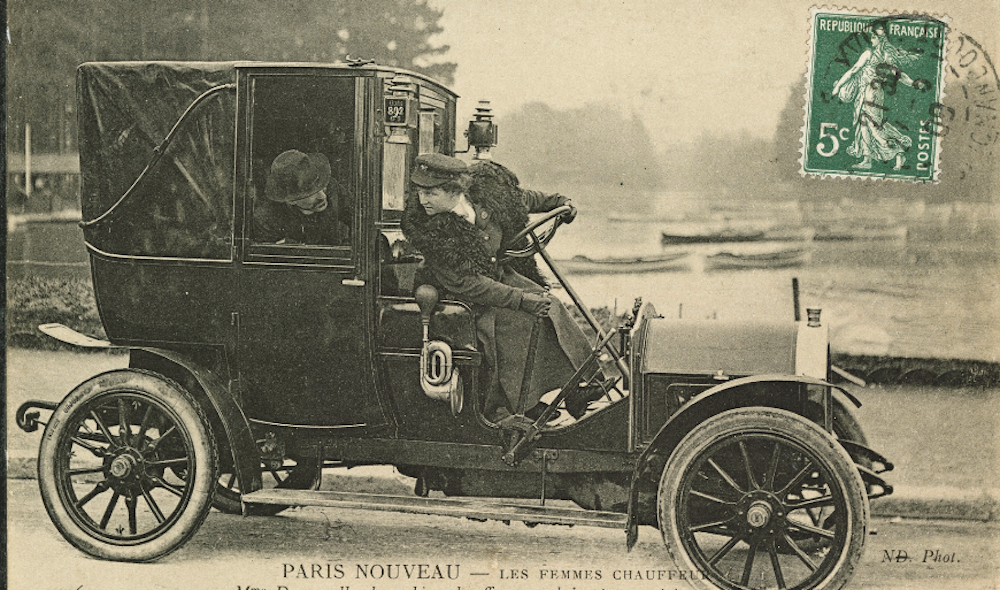History seems to have settled Buckminster Fuller’s reputation as a man ahead of his time. He inspires short, witty popular videos like YouTuber Joe Scott’s “The Man Who Saw The Future,” and the ongoing legacy of the Buckminster Fuller Institute (BFI), who note that “Fuller’s ideas and work continue to influence new generations of designers, architects, scientists and artists working to create a sustainable planet.”
Brilliant futurist though he was, Fuller might also be called the man who saw the present and the past—as much as a single individual could seemingly hold in their mind at once. He was “a man who is intensely interested in almost everything,” wrote Calvin Tomkins at The New Yorker in 1965, the year of Fuller’s 70th birthday. Fuller was as eager to pass on as much knowledge as he could collect in his long, productive career, spanning his early epiphanies in the 1920s to his final public talks in the early 80s.
“The somewhat overwhelming effect of a Fuller monologue,” wrote Tomkins, “is well known today in many parts of the world.” His lectures leapt from subject to subject, incorporating ancient and modern history, mathematics, linguistics, architecture, archaeology, philosophy, religion, and—in the example Tomkins gives—“irrefutable data on tides, prevailing winds,” and “boat design.” His discourses issue forth in wave after wave of information.
Fuller could talk at length and with authority about virtually anything—especially about himself and his own work, in his own special jargon of “unique Bucky-isms: special phrases, terminology, unusual sentence structures, etc.,” writes BFI. He may not always have been particularly humble, yet he spoke and wrote with a lack of prejudice and an open curiosity and that is the opposite of arrogance. Such is the impression we get of Fuller in the series of talks he recorded ten years after Tomkin’s New Yorker portrait.
Made in January of 1975, Buckminster Fuller: Everything I Know captured Fuller’s “entire life’s work” in 42 hours of “thinking out loud lectures [that examine] in depth all of Fuller’s major inventions and discoveries from the 1927 Dymaxion car, house, car and bathroom, through the Wichita House, geodesic domes, and tensegrity structures, as well as the contents of Synergetics. Autobiographical in parts, Fuller recounts his own personal history in the context of the history of science and industrialization.”
He begins, however, in his first lecture at the top, not with himself, but with his primary subject of concern: “all humanity,” a species that begins always in nakedness and ignorance and manages to figure it out “entirely by trial and error,” he says. Fuller marvels at the advances of “early Hindu and Chinese” civilizations—as he had at the Maori in Tomkin’s anecdote, who “had been among the first peoples to discover the principles of celestial navigation” and “found a way of sailing around the world… at least ten thousand years ago.”
The leap from ancient civilizations to “what is called World War I” is “just a little jump in information,” he says in his first lecture, but when Fuller comes to his own lifetime, he shows how many “little jumps” one human being could witness in a lifetime in the 20th century. “The year I was born Marconi invented the wireless,” says Fuller. “When I was 14 man did get to the North Pole, and when I was 16 he got to the South Pole.”
When Fuller was 7, “the Wright brothers suddenly flew,” he says, “and my memory is vivid enough of seven to remember that for about a year the engineering societies were trying to prove it was a hoax because it was absolutely impossible for man to do that.” What it showed young Bucky Fuller was that “impossibles are happening.” If Fuller was a visionary, he redefined the word—as a term for those with an expansive, infinitely curious vision of a possible world that already exists all around us.
See Fuller’s complete lecture series, Everything I Know, at the Internet Archive, and read edited transcripts of his talks at the Buckminster Fuller Institute.
Everything I Know will be added to our collection, 1,700 Free Online Courses from Top Universities.
Related Content:
Bertrand Russell & Buckminster Fuller on Why We Should Work Less, and Live and Learn More
A Harrowing Test Drive of Buckminster Fuller’s 1933 Dymaxion Car: Art That Is Scary to Ride
The Life & Times of Buckminster Fuller’s Geodesic Dome: A Documentary
Buckminster Fuller Documented His Life Every 15 Minutes, from 1920 Until 1983
Buckminster Fuller, Isaac Asimov & Other Futurists Make Predictions About the 21st Century in 1967: What They Got Right & Wrong
Josh Jones is a writer and musician based in Durham, NC. Follow him at @jdmagness



